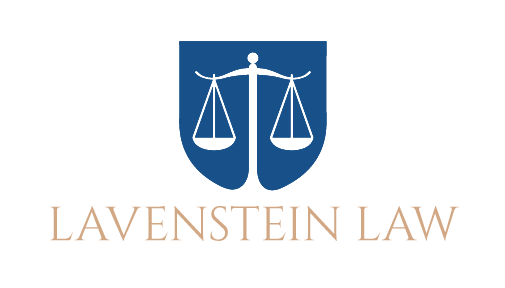By: Rashel Ahmed
[ad_1]
Voluntary manslaughter, as established by the Homicide Act 1957, is determined by three sections: diminished responsibility, provocation, and suicide pact. These are all known as partial defences meaning that they do not give full acquittal of a sentence they only shorten that of murder to manslaughter. Diminished responsibility is established by Section 2 of the Homicide Act which states that “Where a person kills or is party to a killing of another, he shall not be convicted of murder if he was suffering from such abnormality of mind as substantially impaired his mental responsibility for his acts and omissions in doing or being party to the killing.”
It may be used as a defence to murder if the defendant can prove an abnormality of the mind, if, for example, the defendant is an alcoholic, or has a mental condition as in Byrne (1960), where the defendant had uncontrollable sexual desires. The defence is that the defendant does not have the necessary control over their actions, when compared to a reasonable person. Diminished responsibility has been criticised for a number of reasons, the very term ‘Diminished responsibility’ has been criticised by authorities such as the Butler Committee, who say that it is ‘not a medical fact relating to the accused’. There are also many other areas which makes this area of law controversial as I will be discussing.
Abnormality of mind covers a wide range of situations and was describes by Lord Cj Parker in the Court of Appeal in the case of Byrne (1960) as “a state of mind so different from that of ordinary human beings that the reasonable man would term it abnormal.” In Byrne (1960) the defendant who was a sexual psychopath, strangled to death and then mutilated a young woman. He was convicted of murder but the Court of Appeal felt that his condition came within the definition of diminished responsibility and so his conviction of murder was substituted for one of murder.
The main problem was that the medical experts had describes Byrnes condition as amounting to ‘partial insanity’ and the Court of Appeal had approved of this. However, in Seers (1984) it was held that comparisons with insanity are not helpful and should be avoided. In this case the defendant stabbed his estranged wife and claimed diminished responsibility on grounds of chronic reactive depression. The trial judge directed that for the defence to be successful Seers had to be bordering on the insane. He was found to be bordering insane and as a result his so his conviction of murder was substituted for one of murder.
Another problem with the law on diminished responsibility is that diminished Responsibility covers a wide range of mental conditions such as paranoia and epilepsy. Some conditions have been known for years, but some of the conditions have been recognised more recently such as ‘battered woman syndrome’ which was demonstrated in the case of Hobson (1998). In this case the defendant stabbed her alcoholic and abusive partner to death in 1992, during an argument. At the trial she claimed that she had acted in self-defence, and there was a subsidiary issue on provocation. Diminished responsibility was not specifically raised and the defendant was convicted. She appealed on the grounds of diminished responsibility based on battered woman syndrome which previously was not regarded as abnormality of mind until 1994. The Court of Appeal allowed the appeal and ordered a retrial. The problem with this area of law is that some conditions are not regarded as abnormality if mind until later on and so the development on this area of law is very slow which leads to people who have a genuine condition being punished for something they had no control over.
The Abnormality of mind must be caused by one of the matters set out in the brackets within section 2 (1) of the Homicide Act 1957. These are: a condition of arrested or retarded development of mind, any inherent cause, induced by any disease or injury. Inherent cause means one which comes from within the defendant, as opposed to an outside factor and it does not have to be permanent. The important point is that there must be medical evidence given at the trial, of an abnormality of mind arising from one of the specified causes.The abnormality of the mind has to be such as to substantially impair the defendant’s responsibility for his actions. In Lloyd (1967) it was held that ‘substantial’ does not mean ‘total’, nor did it mean ‘trivial’ or ‘minimal’. It is something in between and it is up to the jury to decide if the defendant’s mental responsibility was impaired and if so, was it substantially impaired? In seers (1984) the court also considered the phrase ‘substantially impaired’ and held that ‘substantially’ means more than ‘trivial’ but not ‘total’ or ‘absolute’ impairment.
Diminished responsibility and alcohol makes things more complicated as there are various combinations of intoxication and diminished responsibility that have to be considered which are: intoxication only, intoxication and a pre-existing abnormality of mind not connected to the intoxication, intoxication which has caused brain damage and intoxication due to dependency/addiction.There is a clear rule that intoxication alone is not Diminished responsibility. In Di Duca (1959) – The court of appeal held that the immediate effects of taking alcohol or drugs were not an injury, even if it did have an effect on the brain. So a ‘transient’ state of intoxication was not an abnormality of mind.
There are also difficulties in cases where the defendant has some abnormality of mind but, in addition, is intoxicated at the time he does the killing. This problem was considered in Gittens (1984). In this case the defendant was suffering from depression. During a visit home from hospital he argued with his wife and beat her to death and then raped and killed his stepdaughter. At the time of the offence he had been drinking and taking drugs for depression. The jury had to consider all the factors excluding the intoxication and see if it amounted to a substantial impairment of the defendant’s responsibility for his acts. The decision was interpreted as meaning that the defendant could only prove diminished responsibility if he could satisfy the jury that he would have killed because of the abnormality of mind even if he had not been intoxicated.
This point was later confirmed by Dietschmann (2003). In this case the defendant killed a man in a savage attack whilst he was very drunk. He was also suffered from a mental abnormality, namely an adjustment disorder which was a depressed grief reaction following the death of his aunt, Sarah, with whom he had a close emotional and physical relationship and whom he (wrongly) believed had committed suicide because of her drug problems. It was held that to benefit from the finding of diminished responsibility, D does not have to show he would have killed had he been sober. Also by being intoxicated it does not entitle the defendant to the benefit of the defence of diminished responsibility, the only factor which the law recognises as capable of diminishing his mental responsibility is the mental abnormality described by the expert witnesses. It was also said that drink is only capable of amounting to Diminished Responsibility if it either causes damage to the brain or produces an irresistible craving so that consumption is involuntary (e.g. alcohol dependence syndrome)
If the brain has been injured through alcoholism, then that injury or disease can support a finding of diminished responsibility. This was stated in Tandy (1989). In Tandy (1989), the defendant, an alcoholic, had drunk nearly a bottle of vodka when she told her mother that her eleven year old daughter was involved with her husband (Tandy’s). So she strangled her eleven year old daughter. (She normally drank Vermouth or Barley wine), the court of appeal held that where the defendant is unable to resist drinking, so that is involuntary, this may amount to diminished responsibility. The same point was considered again in wood (2008), where the court of appeal pointed out that the ‘sharp effect of the distinction drawn in Tandy between cases where brain damage has occurred as a result of alcohol dependency syndrome and where it has not, is no longer appropriate. The court of appeal also said that the jury should ignore any consumption of alcohol which they decide was voluntary. In the case of Wood (2008), the defendant was drunk and went to the victim’s house and had fallen asleep. When he awoke he found the victim trying to perform oral sex on him and hit the victim with a meat clever killing him.
Although diminished responsibility had provided a more satisfactory defence than insanity for defendants who kills but are suffering from a mental abnormality, there are still problems with the defence. One such problem is the burden of proof as in most other cases the defence only has to raise the defence and it is up to the prosecution to disapprove it. At the moment, defendants pleasing diminished responsibility are at a disadvantage which is not faced by those raising provocation.
Another problem is the wording of section 2 of the Homicide Act 1957. The definition in this has been constantly criticised. Lord Justice Buxton describes the wording as a ‘disgrace’. The law commission in its report, murder, manslaughter and infanticide (2006) pointed out two principle problems with the current law. These were that the section does not explain what is involved in ‘substantially impairment of mental responsibility’ and that the definition in section 2 was not drafted with the needs and practices of medical experts in mind.
There were also many proposals for reform. For example the Butler Committee recommended placing the burden of proving that the defendant did the act (or made the omission) with the requisite state of mind, on the prosecution. The rationale behind the Committee’s proposal seems to have been the perceived anomaly of the issue of burden of proof in relation to the defences of insanity and diminished responsibility. The Criminal Law Revision Committee also felt that the prosecution should bear the burden of disproving insanity and diminished responsibility. They felt that, however happy lawyers may be with the difference between being sure and being satisfied on the balance of probabilities (adding “if indeed any are”), juries are probably confused by these subtleties and by the different placing of the burden of proof for different offences. The Criminal Law Revision Committee expressed their confidence in the judges to ensure that defences which have no proper basis on the evidence are withdrawn from the jury.
The Butler Committee also recommended that it should be possible, where the prosecution are in possession of evidence indicating that a defence under the section can be made out, for them to charge manslaughter in the first instance rather than murder. The Committee stipulated that the prosecution would be likely to adopt this course only when it is clear that the defence were agreeable to it. If the defence wished to resist evidence of mental disorder the charge should be murder as is currently the case.
The Criminal Law Revision Committee have endorsed the Butler Committee’s recommendation, being of the opinion that the mental condition of a disturbed person is not likely to be improved by having a charge of murder outstanding. They also felt that it cannot be right that charges should be preferred in the most solemn way known to the law, i.e. on indictment, when the prosecution know that there is a defence to the charge which is likely to succeed. In this the Criminal Law Revision Committee had the support of several prominent public bodies.
This recommendation, however, has not been enacted in the Bill. Sparing the defendant from the anxiety of having a trial for murder pending and from the anguish of appearing in court on a murder charge would have given expression to the foundation of humanity on which the defence is based. Only cases where the medical evidence was contested by the prosecution would be tried as murder. Thus valuable court time and expense would have been saved as judges would not be faced with protracted medical testimony on the issue of diminished responsibility before deciding whether or not to accept the plea or to leave it for jury determination. This leads me to conclude that yes the law on diminished responsibility is indeed satisfactory.
[ad_2]
Source














